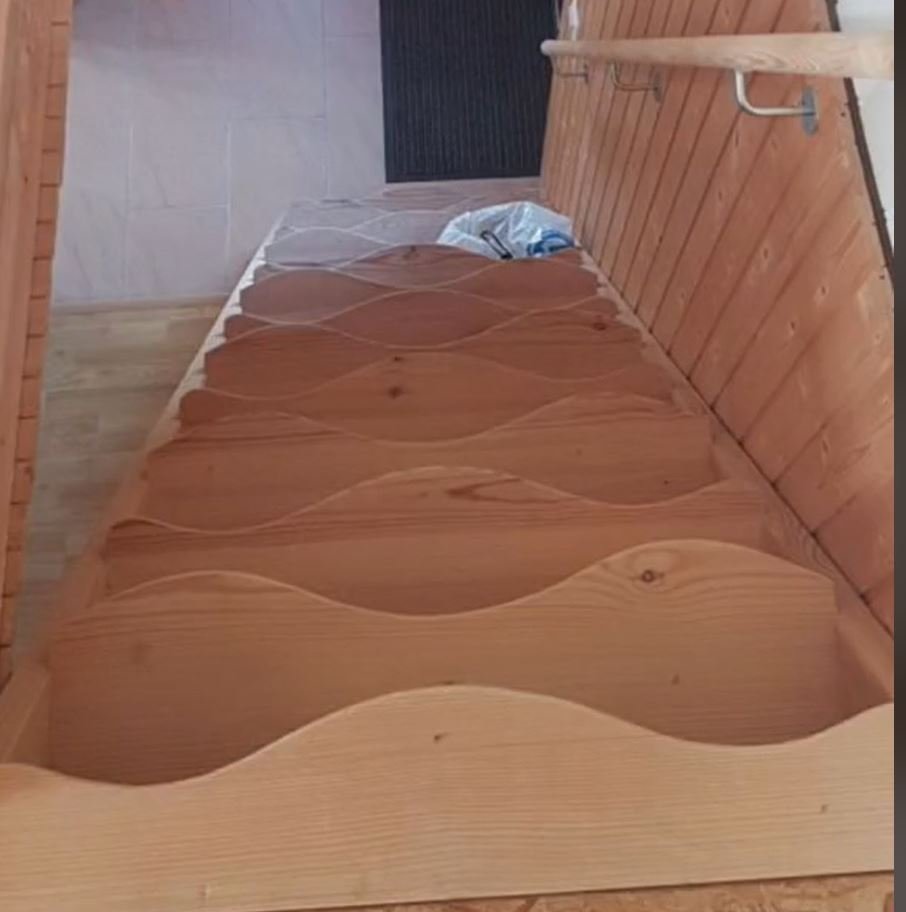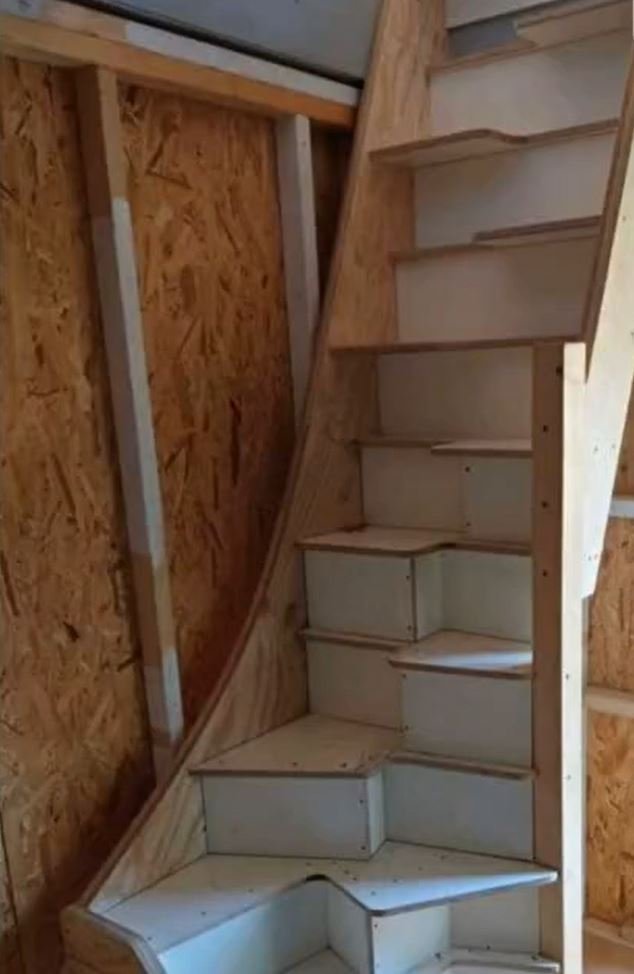Witches’ stairs are a strange but interesting design feature that became popular on TikTok a couple of years ago. Even though they have an unusual history, their name doesn’t really have to do with superstition. Instead, these stairs are a clever design choice. When made and installed correctly, they can be both useful and nice to look at!
Witches’ Stairs aren’t what they Appear.

While the stories about witches’ stairs might sound more interesting, they actually have a very practical purpose. They are really useful in homes with little space, like attics, lofts, and tiny houses. Witches’ stairs are designed to save space while still allowing you to go from one floor to another. Architects often call them “alternate tread stairs.”
How Witches’ Stairs Function

Photo Credit: itsthatrealestatechick | TikTok
Witches’ stairs are designed to save space in two ways. First, each step is only half as wide as regular steps, and the steps are staggered. This makes the staircase narrower than a traditional one. These smaller stairs can also be used for extra storage, like for books or displaying items. According to Scott Schuttner, who wrote “Basic Stairbuilding,” the distance between the steps on one side of an alternating-tread stair is twice the height of the rise, which gives you more space on the steps and makes them safer.
Besides being practical, witches’ stairs meet building codes and safety standards in the U.S. A standard staircase is usually 3 feet wide, while a residential witches’ staircase is typically between 27 and 30 inches wide.
Real Origins

Photo Credit: itsthatrealestatechick | TikTok
In 1985, a businessman named J.M. Lapeyre created a metal version of witches’ stairs. He thought these stairs could be a safe alternative to ladders in commercial and warehouse settings, especially in tight spaces where ladders might not be safe. This design is also used on commercial ships and oil rigs, and it can be called ship stairs or ship ladders, in addition to witches’ stairs and alternate tread stairs.
Misconception

Photo Credit: itsthatrealestatechick | TikTok
When videos of witches’ stairs first appeared on TikTok in 2021, they were linked to an urban legend. According to this legend, these staircases were built in 17th-century Massachusetts to keep witches away during the Salem witch trials because “witches can’t climb up them.” This idea has been proven false, but another rumor suggests that Thomas Jefferson came up with the design. Because of this, witches’ stairs are sometimes called Jeffersonian or Jefferson stairs. However, an original version of the design was also mentioned in a book called “Monckton’s One Plane Method Of Hand Railing and Stair Building,” published in 1888.
Debunking the Myth

Photo Credit: conspiracy___time | TikTok
The exact origins of witches’ stairs are a bit unclear, but one thing is clear: there’s no historical evidence that they were designed to keep witches away. Historian Robin Briggs has studied many historical sources and found no mention of stairs that could disable witches. Interestingly, some people with these unique staircases also buried “witch bottles” or included dead cats in their homes for protection against witchcraft, but Briggs calls this idea “pure disinformation.” He notes that the closest belief was that putting a broom over the door would trap a witch inside.
While it’s fun to think about myths and legends, it’s also interesting to know the real history of witches’ stairs. Regardless, they offer a unique and decorative alternative to regular staircases, adding a fun and quirky touch to home design.
Uncover the Mystery: The Antique Hand Well Water Pump

Envision entering your grandmother’s backyard and encountering something ancient, corroded, and immensely captivating. You find yourself staring at this strange device and asking yourself, “What in the world is this?” Nevertheless, you are not alone in your curiosity, my fellow adventurers. Even with the combined power of the entire internet, the mystery behind the old cast iron hand well water pump remains rather enigmatic.

But do not worry! I’m here to explain this historic gem in simple, down-to-earth terms. Imagine a time when high-tech devices and contemporary faucets were only dreams. Rather, they depended on a dependable ally that stood tall in their backyard: the hand well water pump. This robust marvel with a rusty tint was the key to getting water that could sustain life.
An Iron-Forged Hero
Why is this artifact so unique? Let me now present the main attraction: a hand well water pump made of strong, long-lasting cast iron. Our grandparents had faith in this super hero stuff to make something that would endure a lifetime.
Imagine being able to easily turn a handle up and down. Man and nature alike are quenched as this miraculous device quenches their thirst with every movement, drawing water from a deep subterranean well.
The Everlasting Water Source
Take a trip back in time to when electricity was only a pipe dream. As the most dependable source of water, this hand well water pump was essential to the survival of innumerable villages. It was like having your very own hydration genie right at your fingertips, without the need to rub any lamps.
This little pump was a lifesaver—it could be used for anything from irrigating crops to filling tubs for opulent soaks to simply quenching your thirst on a steamy summer day. It served as a monument to our predecessors’ inventiveness and practicality in using the life-giving water that nature had given them.
The Lost Story
Few people in our contemporary world—powered by the all-powerful Google—are aware of this marvel of cast iron. It functions as an enigmatic historical code that only a small number of history buffs can decipher. But isn’t that what makes it so lovely? There are legends associated with this pump that date back to a time when laboring humans painstakingly extracted water from the Earth’s interior.
So, the next time you find one of these amazing artifacts in your grandmother’s backyard, stop and enjoy it. Go back in time and recognize the tenacity and resourcefulness of our forebears. Allow this brief historical account to serve as a reminder of the progress made in our quest to understand the power of water.



Leave a Reply